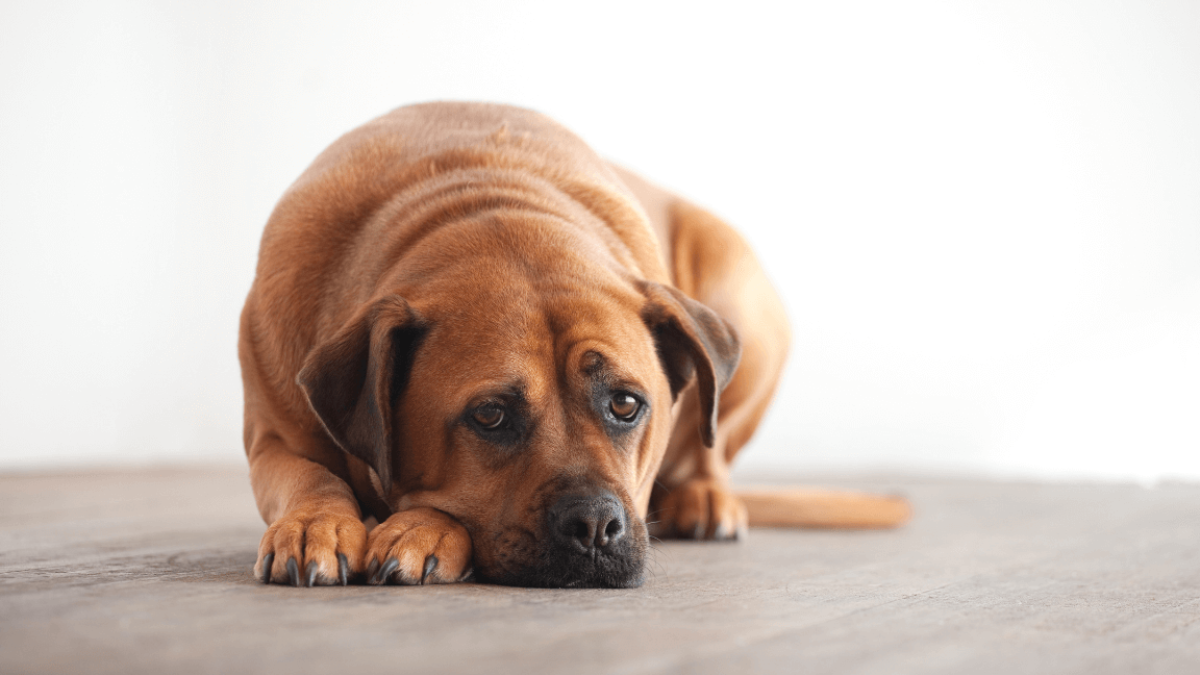Dogs are known for their ability to bring joy and happiness to their owners. However, as the seasons change, some dogs may experience a shift in their mood and behavior. This is particularly true for dogs who suffer from Seasonal Affective Disorder (SAD), a type of depression that affects both humans and animals. Dogs and Seasonal Affective Disorder: Just like humans, dogs can experience changes in their mood and behavior due to factors like reduced daylight and changes in weather patterns.
Symptoms of SAD in dogs may include lethargy, changes in appetite, and withdrawal from activities they once enjoyed. To help dogs cope with SAD, pet owners can provide them with plenty of indoor exercise, exposure to natural light, and mental stimulation. Additionally, maintaining a consistent routine and providing a comfortable and comforting environment can help alleviate symptoms. If a dog's symptoms persist or worsen, pet owners need to consult with a veterinarian for proper diagnosis and treatment options. With proper care and attention, dogs with Seasonal Affective Disorder can still enjoy a happy and fulfilling life.

Understanding Seasonal Affective Disorder is crucial in identifying the symptoms and finding ways to manage it. SAD is a type of depression that occurs during specific times of the year, usually in the fall and winter months. It is caused by a lack of sunlight, which affects the body's production of serotonin, a neurotransmitter that regulates mood. Symptoms of SAD in dogs include lethargy, loss of appetite, and changes in behavior.
Dogs and Mental Health are closely linked, and studies have shown that dogs can help reduce stress, anxiety, and depression in their owners. However, dogs are also susceptible to mental health issues, including SAD. Owners should be aware of the Effects of Seasons on Dogs and take preventive measures to ensure their pets' well-being. By understanding Seasonal Affective Disorder in Dogs and managing it through treatment and therapy options, owners can help their furry friends live a happy and healthy lives.
Key Takeaways
- Seasonal Affective Disorder (SAD) is a type of depression that affects both humans and animals, including dogs.
- Symptoms of SAD in dogs include lethargy, loss of appetite, and changes in behavior.
- By understanding SAD in dogs and managing it through treatment and therapy options, owners can help their furry friends live a happy and healthy life.

Understanding Seasonal Affective Disorder
Basics of SAD
Seasonal Affective Disorder (SAD) is a type of depression that occurs during the winter months when there is less natural sunlight. It is a common condition that affects millions of people worldwide. The symptoms of SAD include feelings of sadness, lethargy, irritability, and a lack of motivation.
The exact cause of SAD is not known, but it is believed to be related to the body's circadian rhythm, which regulates the sleep-wake cycle. When there is less sunlight, the body produces more melatonin, a hormone that regulates sleep. This can lead to feelings of fatigue and depression.
SAD in Animals
SAD is not exclusive to humans; it can also affect animals, including dogs. Dogs are social animals that rely on their owners for companionship and exercise. During the winter months, when there is less daylight, dogs may experience a decrease in activity levels and become more lethargic.
To help alleviate the symptoms of SAD in dogs, owners can try to increase their dog's exposure to natural sunlight by taking them for walks during the day or by opening up blinds and curtains to let in more light. Additionally, providing dogs with plenty of exercise and social interaction can also help to improve their mood and reduce the symptoms of SAD.
In conclusion, SAD is a common condition that affects both humans and animals during the winter months. By understanding the basics of SAD and taking steps to increase exposure to natural sunlight, owners can help alleviate the symptoms of SAD in their dogs.

Dogs and Mental Health
Canine Emotions
Dogs are known for their ability to sense human emotions and respond accordingly. However, it is important to note that dogs also experience a range of emotions. They are capable of feeling joy, fear, anger, and sadness, just like humans.
Research has shown that dogs can experience a form of empathy, which allows them to understand and respond to the emotions of others. This ability to empathize with humans can make dogs great companions for those who are struggling with mental health issues.
Signs of Canine Depression
Just like humans, dogs can also experience depression. Some common signs of canine depression include decreased appetite, lethargy, lack of interest in activities they once enjoyed, and changes in sleep patterns.
It is important for dog owners to be aware of these signs and to seek help from a veterinarian if they suspect their dog may be suffering from depression. In some cases, medication or therapy may be necessary to help the dog overcome their depression.
Overall, dogs can have a positive impact on mental health and can provide comfort and support to those who are struggling. It is important to take care of your dog's mental health, just as you would take care of your own.
Effects of Seasons on Dogs
Winter Challenges for Dogs
Winter can be a challenging season for dogs, especially those that are not well adapted to cold weather. The cold temperatures, snow, and ice can pose several risks to dogs. For example, dogs can suffer from frostbite or hypothermia if they are exposed to the cold for too long. Additionally, the salt and other chemicals used to melt ice on sidewalks and roads can irritate a dog's paws and stomach if ingested.
To keep dogs safe during winter, it is important to provide them with proper protection. This can include a warm coat or sweater, insulated boots, and limiting outdoor time in extreme weather conditions. Additionally, it is important to keep dogs away from areas where chemicals are used to melt ice and snow.

Summer and Dog Behavior
Summer can also have an impact on a dog's behavior. Dogs may become more active and restless during warmer months, which can lead to destructive behavior if they are not properly exercised. Additionally, dogs can become dehydrated and suffer from heat exhaustion if they are exposed to high temperatures for too long.
To keep dogs safe during summer, it is important to provide them with plenty of water and shade. Dogs should also be exercised during cooler times of the day, such as early morning or late evening. Additionally, it is important to never leave a dog in a parked car during warm weather, as the temperature inside a car can quickly become dangerous for a dog.
Overall, it is important to be aware of the effects of seasons on dogs and take proper precautions to keep them safe and healthy throughout the year.
Seasonal Affective Disorder in Dogs
Dogs, like humans, can experience Seasonal Affective Disorder (SAD), a type of depression that occurs during specific seasons, usually in the fall and winter months. While SAD in humans is well-documented, research on SAD in dogs is still in its early stages.
Symptoms of SAD in Dogs
The symptoms of SAD in dogs can vary but may include lethargy, decreased appetite, weight gain, and changes in behavior. Some dogs may become more irritable or anxious, while others may become more withdrawn or less interested in their usual activities.
Diagnosis and Research
Diagnosing SAD in dogs can be challenging, as the symptoms can be similar to other health conditions. Veterinarians may conduct a thorough physical examination, blood tests, and other diagnostic tests to rule out other potential causes of the dog's symptoms.
Research on SAD in dogs is still limited, but some studies have suggested that exposure to natural light and increased physical activity may help alleviate symptoms. Additionally, some veterinarians may recommend behavioral therapy or medication to help manage SAD in dogs.
Overall, while SAD in dogs is not yet fully understood, pet owners should be aware of the potential for their dogs to experience seasonal changes in mood and behavior. If you notice any changes in your dog's behavior or mood, it is important to consult with a veterinarian to determine the underlying cause and appropriate treatment.
Managing SAD in Dogs
Environmental Enrichment
Providing a stimulating environment is crucial in managing seasonal affective disorder (SAD) in dogs. This can be achieved by introducing new toys, rotating them frequently, and creating new play areas. Interactive toys that require mental stimulation, such as puzzle feeders, can also be helpful. Additionally, playing calming music or leaving the television on can provide a sense of comfort to dogs who experience anxiety during the winter months.

Diet and Nutrition
Diet and nutrition play a significant role in managing SAD in dogs. Ensuring that dogs receive a balanced diet with appropriate levels of vitamins and minerals can help support their immune system and promote overall health. Adding supplements such as Omega-3 fatty acids, vitamin D, and B-complex vitamins can also be beneficial in managing SAD symptoms. It is important to consult with a veterinarian before adding any supplements to a dog's diet.
Exercise and Physical Activity
Regular exercise and physical activity can help manage SAD symptoms in dogs. Going for walks, runs, or hikes can provide mental and physical stimulation, which can help alleviate anxiety and depression. Indoor activities such as playing fetch or engaging in training exercises can also provide mental stimulation and physical activity. It is important to adjust the level and duration of exercise according to the dog's age, health, and breed.
In conclusion, managing SAD in dogs requires a holistic approach that includes environmental enrichment, proper diet and nutrition, and regular exercise and physical activity. By providing a stimulating and healthy environment, pet owners can help their dogs cope with the effects of seasonal affective disorder.
Treatment and Therapy Options
Light Therapy
Light therapy is a common treatment option for seasonal affective disorder (SAD) in both humans and dogs. This therapy involves exposure to bright light, which can help regulate the body's internal clock and improve mood. In dogs, light therapy can be administered using a specialized light box or by increasing exposure to natural sunlight.
It is important to note that not all dogs respond to light therapy, and it should only be used under the guidance of a veterinarian. Overexposure to bright light can cause eye damage and other health problems in dogs.

Professional Interventions
In addition to light therapy, several professional interventions may be recommended for dogs with SAD. These may include:
- Behavioral therapy: This type of therapy involves working with a professional to identify and modify behaviors that may be contributing to the dog's symptoms.
- Medication: In some cases, veterinarians may recommend medication to help manage the symptoms of SAD. This may include antidepressants or other mood-stabilizing drugs.
- Environmental changes: Making changes to the dog's environment, such as increasing exposure to natural light or providing more opportunities for exercise and socialization, may also be helpful.
It is important to work closely with a veterinarian to determine the best course of treatment for a dog with SAD. With the right treatment and support, many dogs can manage their symptoms and enjoy a happy, healthy life.
Preventive Measures
To prevent seasonal affective disorder (SAD) in dogs, there are a few preventive measures that owners can take. These measures include regular vet check-ups and seasonal routine adjustments.
Regular Vet Check-Ups
Regular vet check-ups are essential for maintaining a dog's health and well-being. During these check-ups, the vet can identify any underlying health issues that may contribute to SAD. For example, if a dog has an undiagnosed thyroid condition, it may be more susceptible to SAD.
The vet can also provide advice on the best preventive measures for a particular dog. This may include dietary changes, supplements, or medication. The vet can also recommend a specific type of light therapy that may be effective for a particular dog.
Seasonal Routine Adjustments
Adjusting a dog's routine to accommodate the changing seasons can also help prevent SAD. For example, increasing the amount of time a dog spends outside during daylight hours can help increase its exposure to natural light. This can help regulate the dog's circadian rhythm and improve its mood.

Owners can also provide their dogs with stimulating activities during the winter months. This can include playing games, going for walks, or trying new activities. Providing a dog with a stimulating environment can help prevent boredom and reduce the risk of SAD.
In conclusion, preventing SAD in dogs requires a combination of regular vet check-ups and seasonal routine adjustments. By taking these preventive measures, owners can help ensure their dogs remain healthy and happy throughout the year.
Conclusion:
In conclusion, understanding "Dogs and Seasonal Affective Disorder" is crucial for pet owners to recognize and address mood changes in their furry companions. As with humans, dogs may experience shifts in behavior and mood during seasonal transitions, leading to symptoms like lethargy and changes in appetite. By being attentive to these signs and implementing proactive measures such as providing indoor exercise, exposure to natural light, and maintaining a consistent routine, pet owners can help alleviate the effects of Seasonal Affective Disorder on their dogs.
Additionally, creating a comfortable and comforting environment can contribute to their emotional well-being. Consulting with a veterinarian for proper diagnosis and treatment options is essential for dogs displaying persistent or severe symptoms of SAD. With compassionate care and understanding, pet owners can support their furry friends through seasonal changes, ensuring their overall health and happiness throughout the year.
Frequently Asked Questions
- What are the signs of seasonal affective disorder in dogs?
- The signs of seasonal affective disorder in dogs are similar to those in humans. The dog may become lethargic, lose interest in activities they once enjoyed, and experience changes in appetite. They may also become irritable or anxious and have difficulty sleeping.
- How can you treat seasonal affective disorder in dogs?
- Treatment for seasonal affective disorder in dogs may include increasing exposure to natural light, providing more playtime and exercise, and adjusting the dog's diet. In some cases, medication may be prescribed to help improve the dog's mood.
- Can a lack of sunlight contribute to depression in dogs?
- Yes, a lack of sunlight can contribute to depression in dogs. Sunlight helps regulate the body's production of serotonin, a hormone that affects mood. When there is less sunlight, the body produces less serotonin, which can lead to depression.
- What are the common symptoms of depression in dogs?
- The common symptoms of depression in dogs include lethargy, loss of interest in activities, changes in appetite, irritability, anxiety, and difficulty sleeping.
- How does the behavior of a dog change when it is experiencing seasonal depression?
- When a dog is experiencing seasonal depression, their behavior may change in several ways. They may become less active, lose interest in playing, and sleep more than usual. They may also become more irritable or anxious and may have changes in appetite.
- What strategies can help improve a dog's mood during the darker winter months?
- Strategies that can help improve a dog's mood during the darker winter months include increasing exposure to natural light, providing more playtime and exercise, adjusting the dog's diet, and considering medication if necessary. It's also important to maintain a routine and provide plenty of love and attention to the dog.






